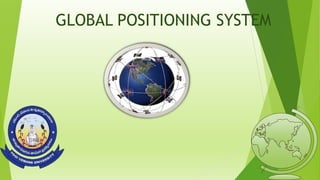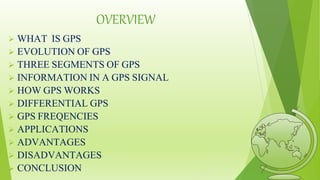The document discusses the Global Positioning System (GPS). It has three segments - space, control, and user. 24 satellites comprise the space segment. The control segment monitors the satellites. GPS uses triangulation of signals from multiple satellites to determine a user's precise location. It provides location and navigation services to both military and civilian users around the world.





















